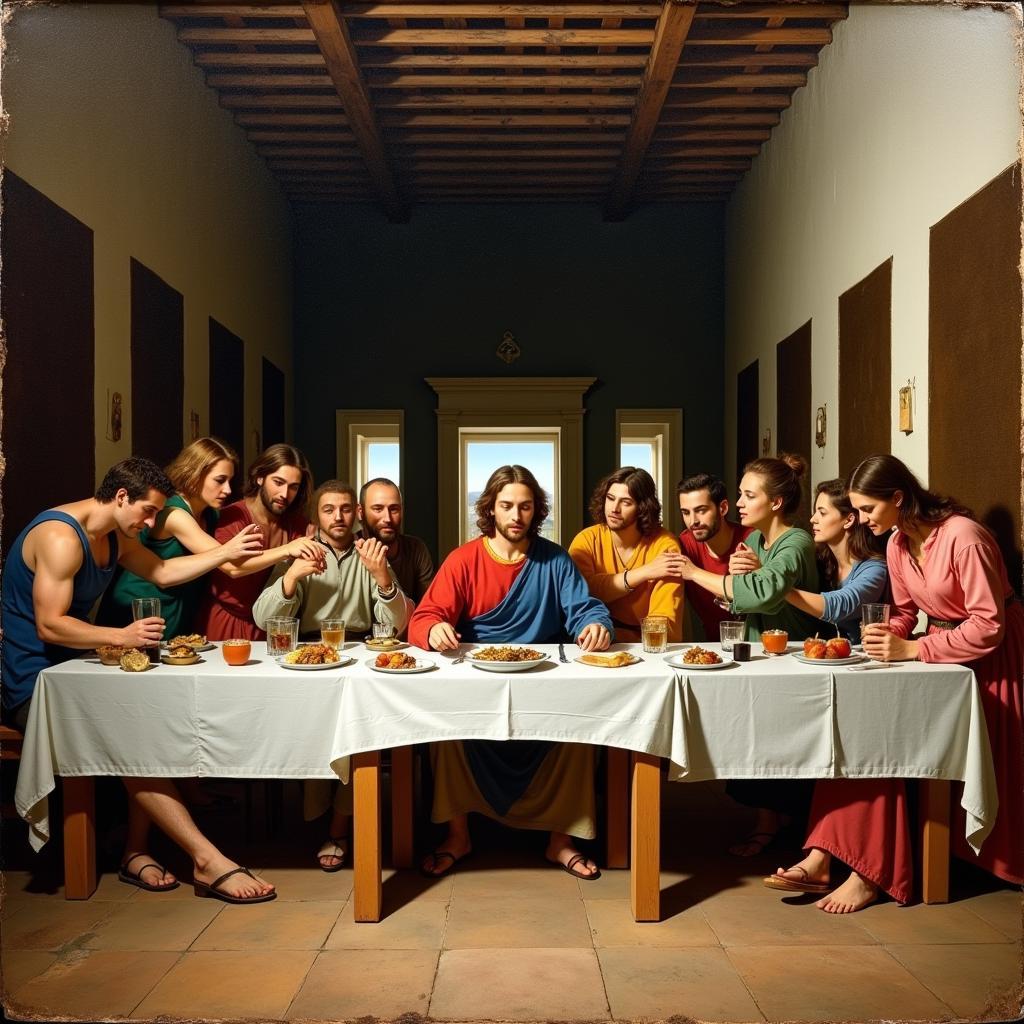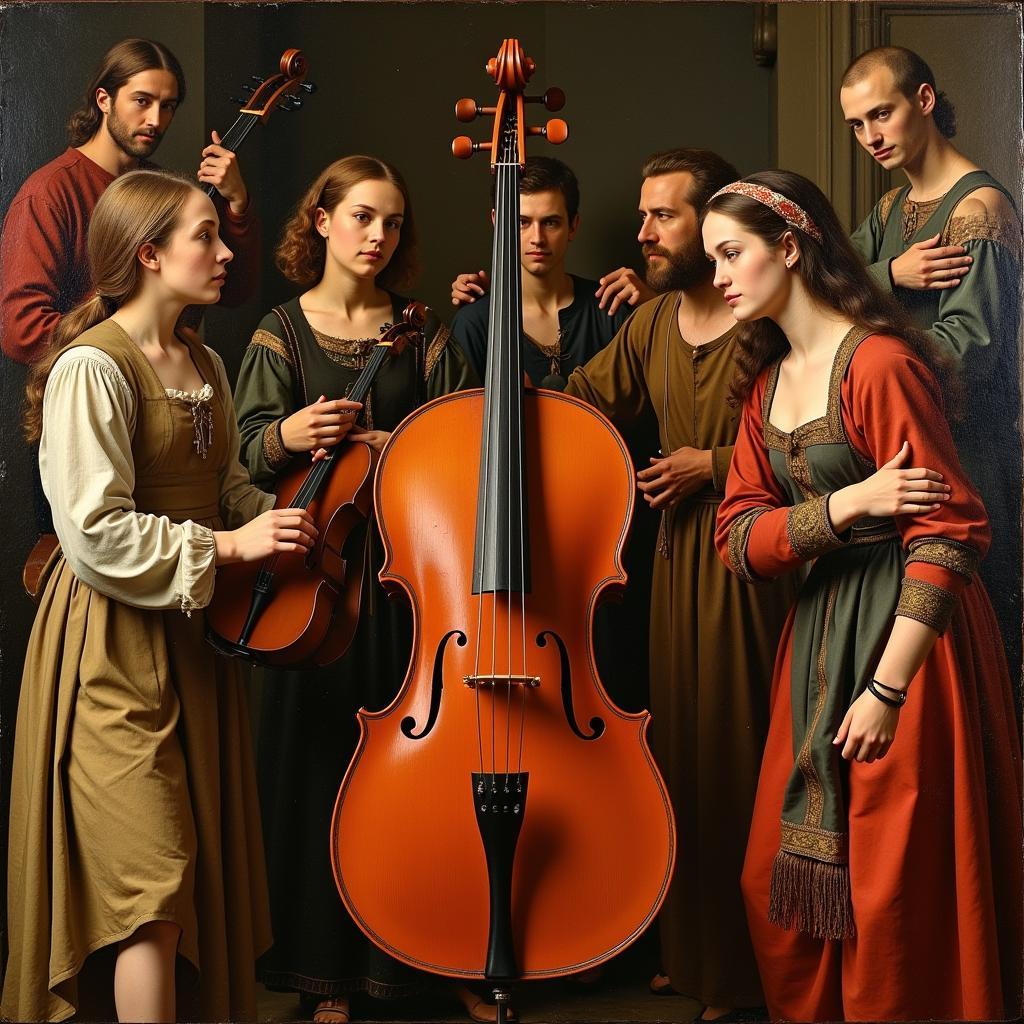Art and Jesus: Exploring the Divine Intersection
The intersection of Art And Jesus has captivated humanity for centuries. From the stained-glass windows of medieval cathedrals to the evocative paintings of the Renaissance, artists have long sought to capture the essence of Jesus and his teachings through their chosen mediums. This enduring fascination speaks to the profound impact of Jesus’s life and message on human creativity and our innate desire to connect with the divine through artistic expression.
The Enduring Influence of Jesus in Art
Throughout history, Jesus has been one of the most depicted figures in art. His image, often imbued with symbolism and allegory, has graced countless paintings, sculptures, mosaics, and tapestries. This prevalence is a testament to the powerful hold Jesus’s story has had on the collective human imagination, inspiring artists across cultures and time periods.
Early Christian art, emerging from the Roman catacombs, often depicted Jesus symbolically as a shepherd, a fish, or through the use of the Chi Rho symbol. As Christianity gained prominence, so too did more direct representations of Jesus. Byzantine icons, with their ethereal beauty and spiritual depth, became a cornerstone of religious art, setting the stage for later artistic explorations.
 The Last Supper in Contemporary Art
The Last Supper in Contemporary Art
The Renaissance witnessed a flourishing of artistic innovation, and depictions of Jesus became increasingly realistic and emotionally charged. Masterpieces like Leonardo da Vinci’s “The Last Supper” and Michelangelo’s “The Creation of Adam” showcased the technical brilliance and spiritual depth that artists brought to their portrayals of Jesus.
Beyond Traditional Representations: Jesus in Modern Art
While traditional depictions of Jesus remain powerful, modern and contemporary artists have embraced new ways of engaging with his image and message. Some artists challenge conventional iconography, reinterpreting biblical stories through abstract forms, bold colors, and unconventional materials. This departure from realism doesn’t diminish the spiritual impact; rather, it often serves to amplify the emotional and symbolic resonance of Jesus’s life and sacrifice.
For example, some contemporary artists explore Jesus’s humanity, portraying him as a compassionate healer, a revolutionary figure, or a symbol of hope for the marginalized. Others delve into the theological complexities of his divinity, using abstract imagery to evoke the mystery and wonder surrounding his nature.
[christian wall art for living room](https://danteum.com/christian-wall-art-for-living room/)
Why Art and Jesus Remain Intertwined
The enduring connection between art and Jesus stems from several factors:
-
The Power of Narrative: Jesus’s life, death, and resurrection form a compelling narrative arc filled with drama, emotion, and profound themes of love, sacrifice, and redemption. Artists are naturally drawn to such rich narratives, finding endless inspiration in their various interpretations.
-
Spiritual Resonance: For many, art serves as a conduit to the divine. Depictions of Jesus can evoke feelings of awe, reverence, and spiritual connection, allowing viewers to engage with their faith on a deeply personal level.
-
Cultural Significance: Jesus’s influence on Western culture is undeniable. Art reflecting his image and stories serves as a visual reminder of this cultural heritage, prompting reflection on enduring values and beliefs.
Finding Meaning in the Intersection
Whether you are a devout believer or simply appreciate the artistic merit of religious art, exploring the relationship between art and Jesus offers a unique window into human history, creativity, and spirituality.
By engaging with artistic representations of Jesus, we can deepen our understanding of his enduring legacy and the multifaceted ways in which his life and message continue to inspire and challenge us today.
FAQ
1. What is the significance of depicting Jesus in art?
Depicting Jesus in art serves several purposes: to tell his story, evoke spiritual feelings, preserve cultural heritage, and offer different interpretations of his life and teachings.
2. How has the depiction of Jesus in art evolved over time?
Early Christian art used symbolism, while later periods embraced realism and emotional depth. Modern art explores diverse styles and interpretations.
3. Why is Jesus still a relevant subject for contemporary artists?
Jesus’s story continues to resonate with artists because of its powerful themes, spiritual significance, and relevance to contemporary issues.
4. Where can I find examples of art depicting Jesus?
Museums, churches, art galleries, and online platforms all offer a wealth of examples, from historical masterpieces to contemporary interpretations.
5. What can I learn from studying art that depicts Jesus?
Studying such art can deepen your understanding of art history, religious beliefs, cultural values, and the enduring power of Jesus’s story.
Need Help?
For assistance with art related to Jesus or any other inquiries, please contact us:
Phone: 02462573573
Email: danteum@gmail.com
Visit us:
Savico Megamall, 7-9 Đ. Nguyễn Văn Linh, Gia Thụy, Long Biên, Hà Nội 10000, Việt Nam
Our customer service team is available 24/7 to assist you.


